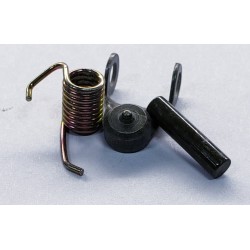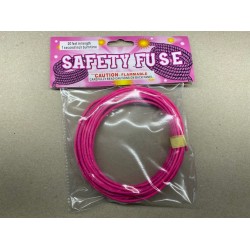Rocket propellant #1 ('Candy Propellant')
Source: rec.pyrotechnics
Comments: This propellant is often refferred to as "candy propellant".
Preparation: It is best prepared by melting the potassium nitrate and sugar together, but this is a dangerous operation and could result in accidential ignition during preperation. Dry mixing is possible and much safer but produces lower quality propellant.
Potassium nitrate.................................74.5
Sugar.............................................25.5
Rocket propellant #2
Source: rec.pyrotechnics
Comments: The propellant has a burn rate of 0.0385 inch/sec at 100psi and a burn rate of 0.04 inch/sec at 300psi. Burn temperature is approx. 1800K. and ISP=180.
Preparation:
Ammonium nitrate..................................85-90%
Elastomeric binder (HTPB or other urethane plastic).....?
Rocket propellant #3
Source: rec.pyrotechnics
Comments: Stinks like ammonia when mixed, and hardens faster than normal epoxy curing time. Suggestions for rocket dimensions: 1" rocket tube, 3" fuel length, Durhanm's water putty nozzle 3/8" thick, and 5/16" diameter. Core in center of fuel about 3/8" diameter through the length.
Preparation:
Ammonium perchlorate, 200 micron..................80
Resin (Epon 815 epoxy & curing agent U)...........20
Copper chromite...................................+1%
Rocket propellant #4
Source: Composition from the text ?The Incredible Five Cent Sugar Rocket' distrubuted on the internet by the Teleflite corporation.
Comments: Mixture is somewhat hygroscopic. Low impulse propellant.
Preparation:
Potassium nitrate.................................63
Sugar.............................................27
Sulfur............................................10
Rocket propellant #5 (Whistling)
Source: rec.pyrotechnics archive. Article by A.J. Smith
Comments: Loud whistling rockets can be made with this. The author of the text this composition was taken from used it in nozzle-less whistling rockets. The rocket casings were 3/4 inch inner diameter, and 3.25 inch length. The fuel grain ended 1/8" from the rear end of the motor tube.
Preparation: 1. Mix the iron oxide with the potassium benzoate and mill this mixture untill a very fine powder is obtained. 2. Melt the petroleum jelly in a beaker on low heat. Turn the hot plate or stove off. Make sure no sources of heat or sparks are present before proceeding with the next steps. 3. While stirring, add 5 parts of toluene to each part of petroleum jelly by weight. Laquer thinner can be substituted for toluene when pure toluene is not available. Continue stirring untill the petroleum jelly has completely dissolved in the solvent used. 4. Add the petroleum jelly to the potassium benzoate/iron oxide mix and stir the mixture untill it becomes homogenous. 5. Then, slowly add the potassium perchlorate while stirring continuesly with a wooden spoon for several minutes until homogenous. At this point, the mixture usually has a consistency of thick soup and the beaker is warm to the touch. If the mixture seems too dry or thick, extra toluene or laquer thinner can be added at this stage. 6. Spread the composition out in a layer about 1/2" thick on kraft paper over newspapers to dry overnight. It is important that the mixture has thoroughly dried before pressing motors. A slightly damp mix can cause some shrinkage of the propellant grain over a period of days or weeks, causing the rocket to explode when ignited. 7. When the composition has dried overnight, carefully run the mixture through a 20 mesh sieve twice and store in a paper container so that trace amounts of solvent can evaporate. After several days, the mix is ready to press.
Potassium perchlorate (fine mesh).................64
Potassium benzoate................................32
Red Iron Oxide, Fe2O3.............................1
Petroleum jelly...................................3
Rocket propellant #6 (KNO3 propellant)
Source: rec.pyrotechnics. Posted by Chris Beauregard <cpbeaure@descartes.waterloo.edu
Comments: The burning rate of these rocket fuels depends much less on pressure than that of black powder. This widens the accetable limits of the ratio nozzle area/fuel surface area.
Preparation:
Potassium nitrate.................................72
Carbon............................................24
Sulfur............................................4
Rocket propellant #7 (NaNO3 propellant)
Source: rec.pyrotechnics. Posted by Chris Beauregard <cpbeaure@descartes.waterloo.edu
Comments: The burning rate of this rocket fuels depends much less on pressure than that of black powder. This widens the accetable limits of the ratio nozzle area/fuel surface area.
Preparation:
Sodium nitrate....................................69
Carbon............................................27
Sulfur............................................4
Rocket propellant #7 (Zinc/Sulfur)
Source: rec.pyrotechnics
Comments: Burns very fast, producing lots of smoke. It is not a very effective propellant due to its low energy density.
Preparation:
Zinc..............................................67.1%
Sulfur............................................32.9%
Space Shuttle Boosters propellant
Source: NASA homepage
Comments:
Preparation:
Aluminum powder...................................16
Ammonium perchlorate..............................69.9
Fe2O3 catalyst....................................0.07
Rubber based binder of polybutadiëne acrylic acidacrylonitrile.....12.04
Epoxy curing agent................................1.96
ESTES C-class rocket engine propellant
Source: rec.pyrotechnics, Composition from 1994 US Dept. of Labour Material Safety Data Sheet.
Comments:
Preparation:
Potassium nitrate.................................71.79
Sulfur............................................13.45
Charcoal..........................................13.81
Dextrin...........................................0.95
Blue strobe rocket propellant
Source: Greg Gallacci <psygreg@u.washington.edu
Comments: The GE silicone II is noted for having an ammonia-like odor, where the GE silicones smell more like vinegar. The dimensions of the rocket made with this propellant were 1 1/8 inch ID, with a 1/2 inch core.
Preparation: Mix the copper oxide, PVC and silicone first, in a plastic bag. Then mix in the ammonium perchlorate. The stuff is said to be somewhat crumbly, and presses well.
Ammonium perchlorate..............................63
Silicone II.......................................22
Copper(II)oxide...................................10
PVC...............................................5




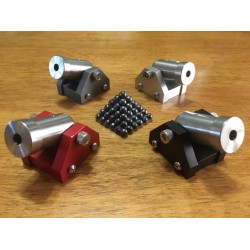
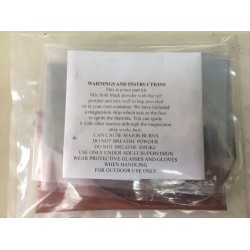
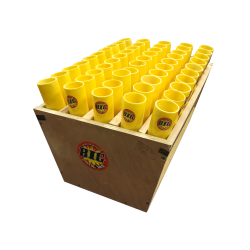
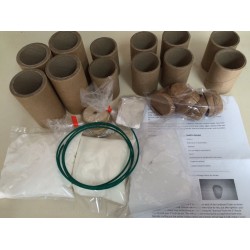
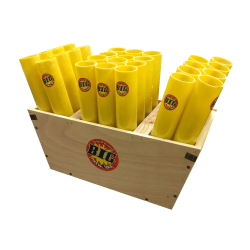
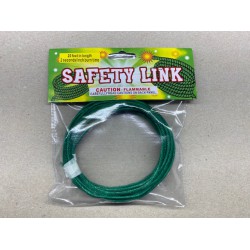

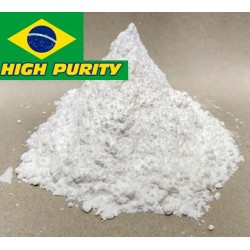
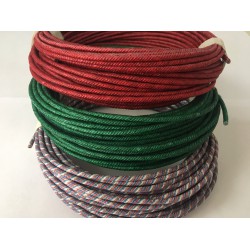
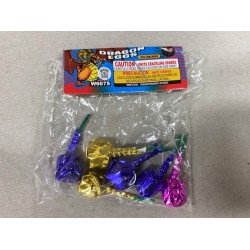
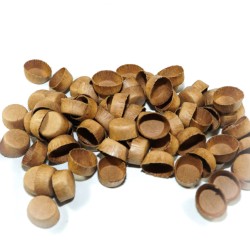
-250x250.jpg)
